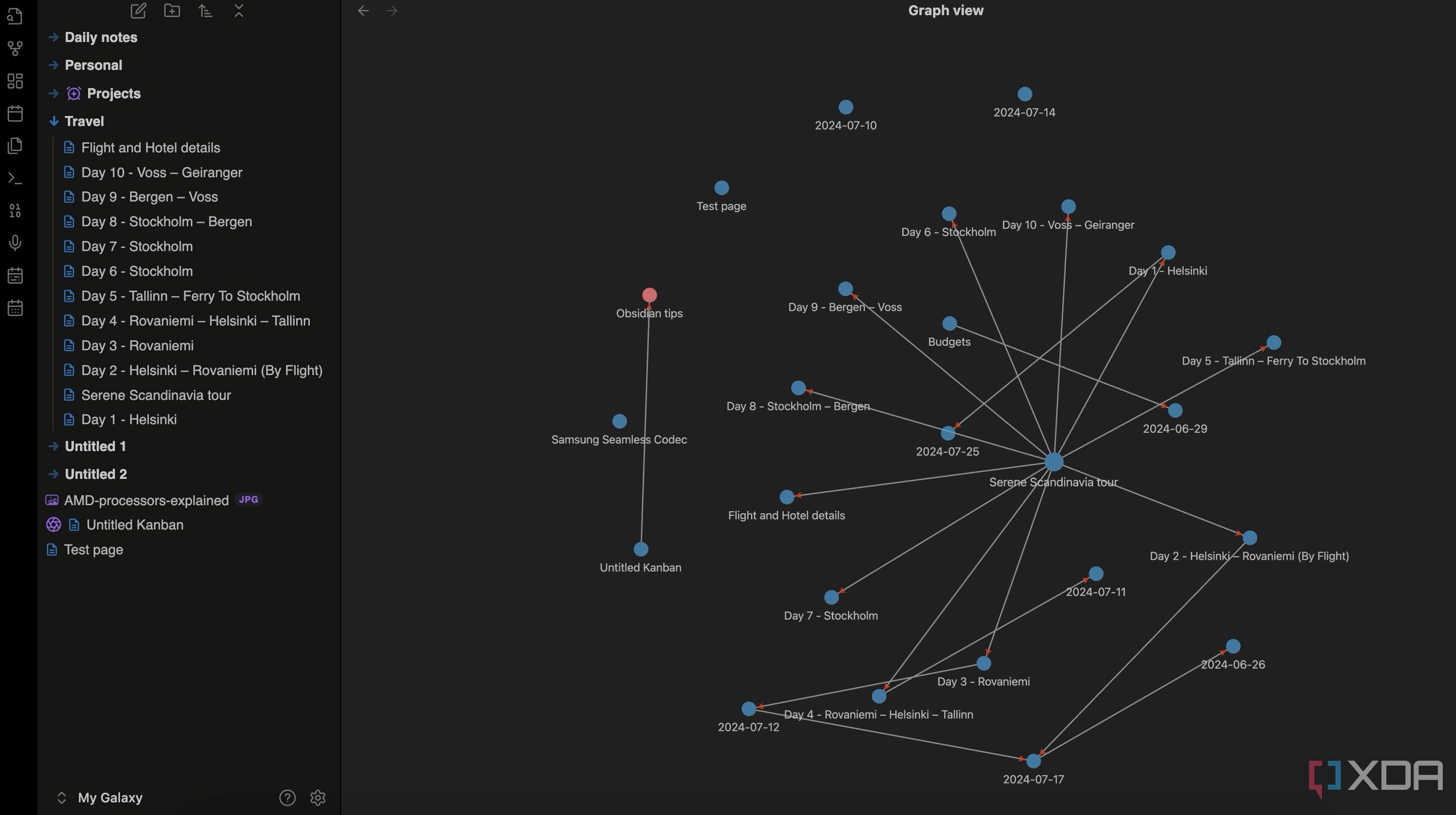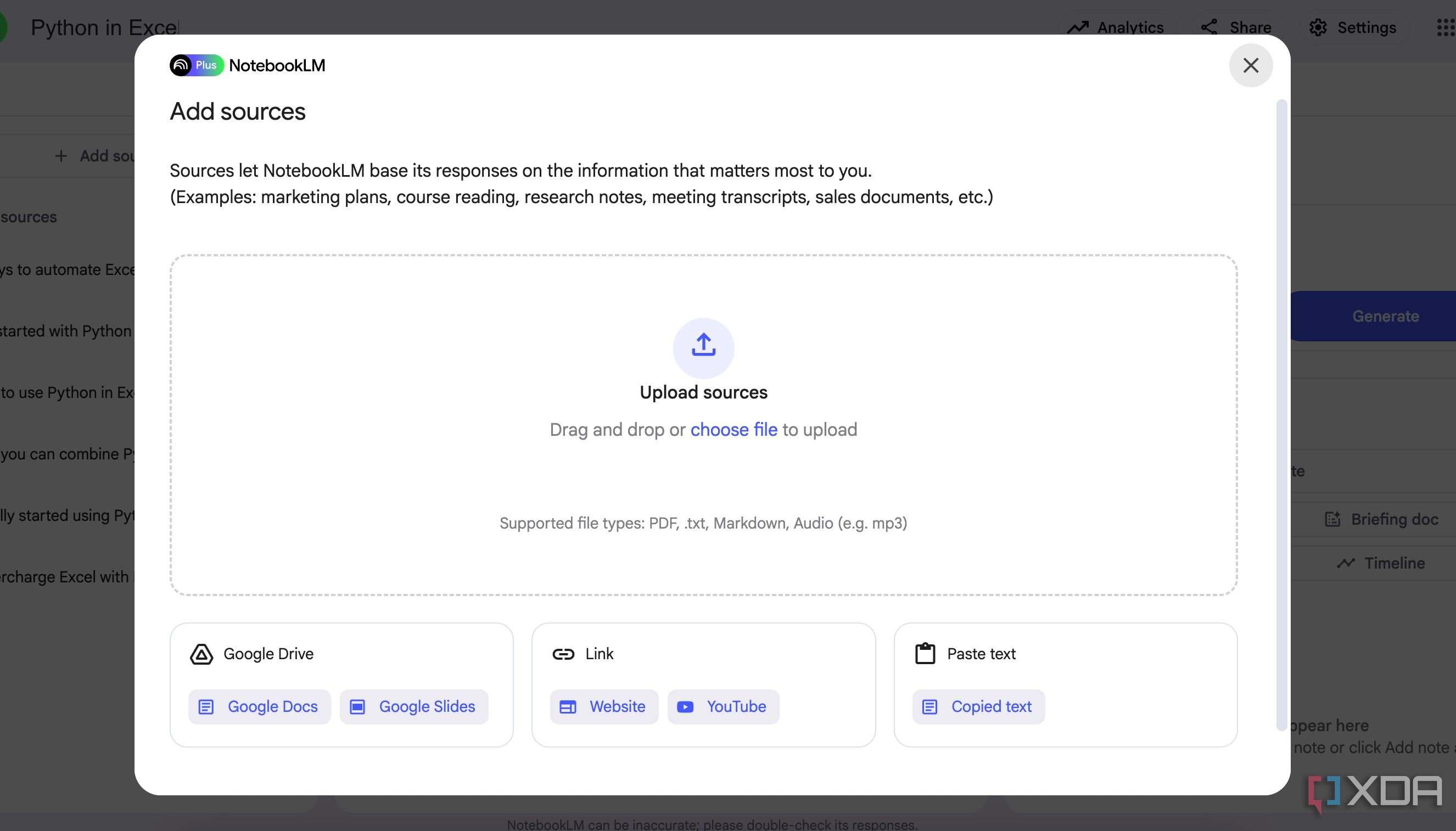I started using NotebookLM with Obsidian and it’s been a game-changer
Key Points:
For years, Obsidian has been my digital brain, the central hub for all my notes, thoughts, and research. Its powerful linking capabilities and local-first approach have made it a crucial part of my workflow. While Obsidian comes with robust search, tags, and graph view, it requires manual efforts to extract valuable information from my vaults. Here is where I came across Google’s AI-powered NotebookLM tool and decided to hook it up with Obsidian.
To my surprise, this integration wasn’t just an upgrade, it’s been a game-changer for my productivity and creative workflow.
Using Obsidian for my research process
It leaves a lot to desire

use graph view in Obsidian
I use Obsidian for my research process due to control and interconnectedness. It starts with creating a dedicated vault for a specific project or area of interest. Within that vault, I will set up folders to organize my thoughts and resources and then create individual Markdown notes.
The power of Obsidian truly shines through its backlinks that allow me to create a rich web of connections between related ideas, concepts, and source materials. When I open the graph view, I can visually explore these relationships and see how my knowledge ecosystem is growing.
However, as my vault expands with hundreds of notes, I constantly hit a wall. While I can use the search bar or tags, I have often run into problems with finding specific information from my vault. Obsidian’s plugin store does offer several AI tools for summarization, but my experience has never been ideal. I have tried several plugins, and while they might offer basic summaries of individual notes, they struggle to connect the dots across dozens, or even hundreds, of related documents.
Take my recent dive into ‘Python for Excel’ for example. I created a new vault and filled it with notes covering everything from specific functions and syntax to practical use cases and best practices. While the individual notes are well organized, the sheer quantity makes it difficult to understand critical patterns or quickly extract answers to complex questions. The more notes I added about different libraries, the more valuable information felt buried. And this is precisely where NotebookLM enters into picture.
Why did I combine Obsidian with NotebookLM?
It makes so much sense

Add sources in NotebookLM
This is where the magic truly begins. NotebookLM emerged as the missing piece in my knowledge workflow, and the integration with Obsidian couldn’t be simpler. Since Google AI tool supports Markdown, I can easily create a notebook and start uploading all my Markdown notes from the local storage. I don’t need complex workarounds or third-party connectors.
But it doesn’t stop here. NotebookLM also supports other research materials. This means I can feed weblinks from articles I have read, transcriptions from relevant YouTube videos, important PDFs, and more. Suddenly, all my research can be centralized by a powerful AI.
Let’s continue with the same example. Instead of reviewing dozens of individual Markdown notes in Obsidian, I can create a NotebookLM notebook and upload all my Obsidian notes on the topic, then add the links to key Microsoft documentation, a YouTube tutorial on custom functions, and ask NotebookLM direct questions.
When I ask questions, NotebookLM doesn’t surf the web or find information from a random Reddit thread. It entirely uses the sources that I have added. It’s like my personal search engine where I control the sources and get astute answers in no time.
Generating and saving insightful information using NotebookLM
You have to experience to believe
Once you start asking questions, you will understand how NotebookLM is more powerful that you initially estimated. I can start asking targeted questions about the entire body of knowledge.
- Explain the differences between xlwings and openpyxl for data manipulation.
- What are the best practices for handling large datasets when integrating Python with Excel?
- Summarize the different methods for passing data between Python and Excel cells.
- What are the common pitfalls when using pandas with Excel in Python?
NotebookLM also suggests related questions at the bottom, which have been quite handy. I can generate mind maps to break down complex subjects and save them on my device (and later bring them to my Obsidian vault). Another neat add-on is audio overview, which is basically a podcast-style spoken summary that I can download to listen to later.
Overall, NotebookLM brings the much-needed AI touch to my Markdown notes and elevates my Obsidian vaults to the next level. This is just a single example. You can practically turn any Obsidian vault into an AI search engine using NotebookLM.
From notes to insights
If you are an existing Obsidian user, I highly recommend giving this setup a try. Now, I wish there were a plugin to run NotebookLM AI right into my vault (highly unlikely, though). Until then, I will continue to leverage this duo for complex research. If you have ever felt overwhelmed by your growing Markdown notes or struggled to uncover deeper connections without your research, upload the vault to NotebookLM and get meaningful insights in no time.
Summary:
My secret combo for peak productivity
Source: I started using NotebookLM with Obsidian and it’s been a game-changer